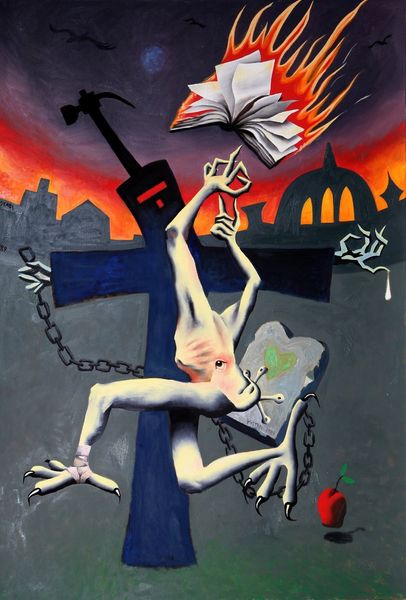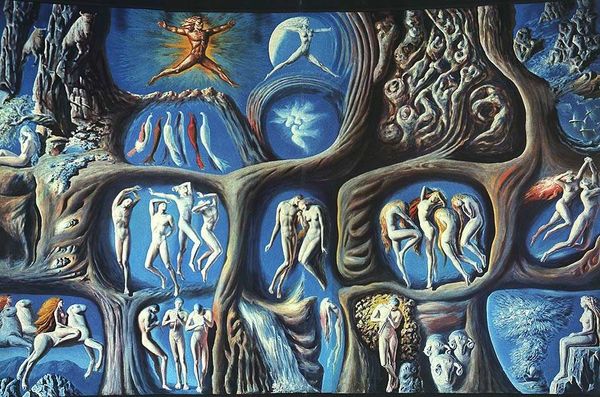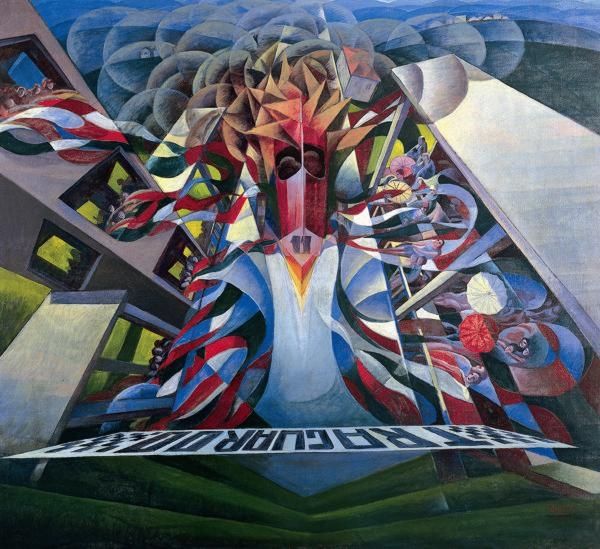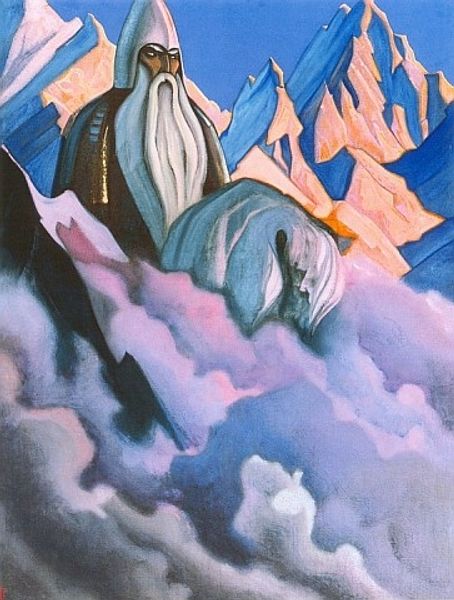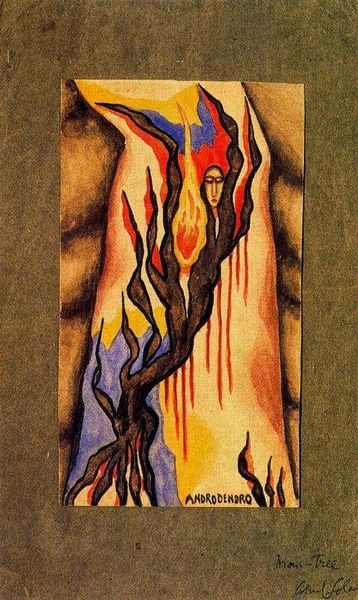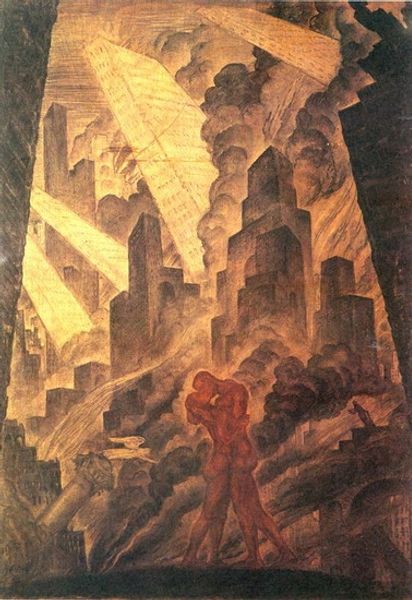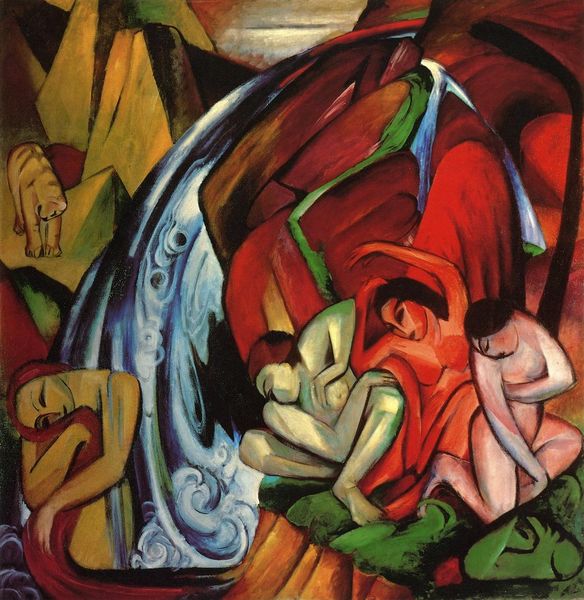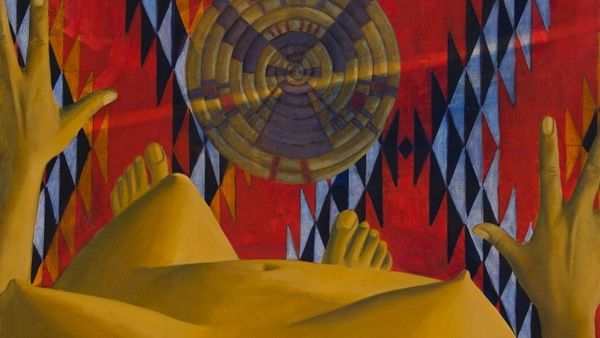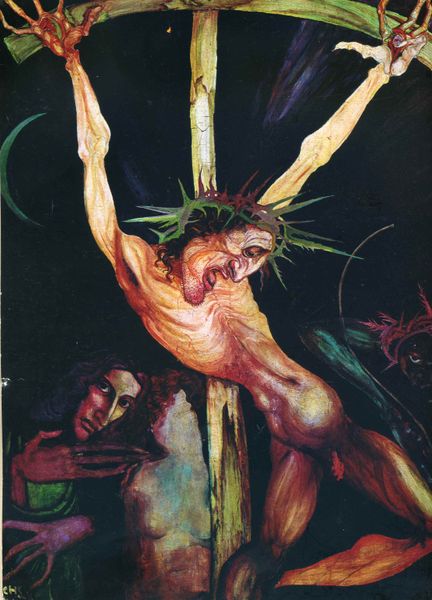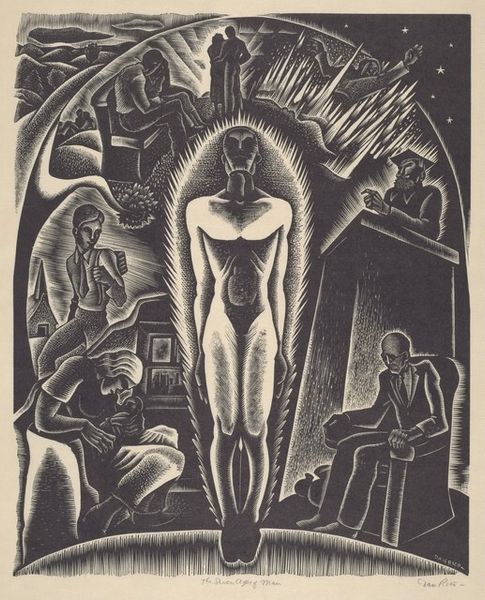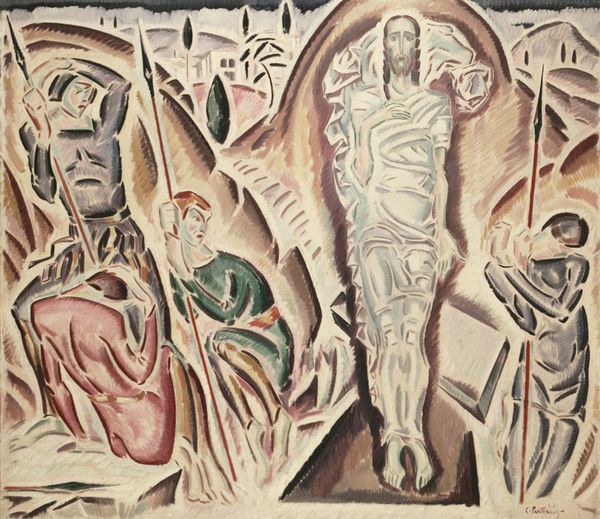
Copyright: Gerardo Dottori,Fair Use
Curator: Gerardo Dottori's "Crucifixion," painted in 1928, presents a radical take on a well-worn subject. Dottori, heavily involved with Futurism, infuses this religious scene with dynamic energy. Editor: My initial impression is one of fragmented solidity. The sharp geometric forms and vivid contrasts – the blues and reds battling for space – convey an intense visual drama. Curator: Absolutely. Dottori was keen on incorporating the Futurist love for speed, dynamism, and technology, even within religious iconography. It reflects Italy’s shifting cultural landscape at the time. Notice how the traditional narrative is deconstructed into lines of force. The cross and the figure of Christ are depicted using these very distinct geometric shapes, making the entire scene appear very modern. Editor: That geometry isn't just aesthetic, though. Look at how the lines direct our eye upward, towards the divine, through Christ. Tempera must have been painstakingly layered to achieve these subtle gradients and sharp edges. This is very clearly and consciously built and made. Curator: The socio-political implications are worth considering too. Remember that Futurism was closely aligned with Fascism in Italy. So depicting Christ with such force and vigour possibly aimed to align religious imagery with nationalistic strength and advancement. It's a bold claim, a deliberate politicisation of faith in service to the state. Editor: Interesting to note how Dottori merged religious symbolism with avant-garde aesthetic principles. Did Futurism's embrace of industrial materials influence his decision to render human figures into machine-like compositions here? I imagine the tools and labour practices behind this contrast strangely with the implied divinity of the scene. Curator: In many respects the painting represents both a breakdown of traditional artistic representation, and perhaps the beginning of the social upheavals on the horizon, culturally and politically. Editor: A stunning piece to contemplate the artist's conscious material engagement within a volatile socio-political landscape. The intersection of material and myth yields much in the way of our own self reflection.
Comments
No comments
Be the first to comment and join the conversation on the ultimate creative platform.
